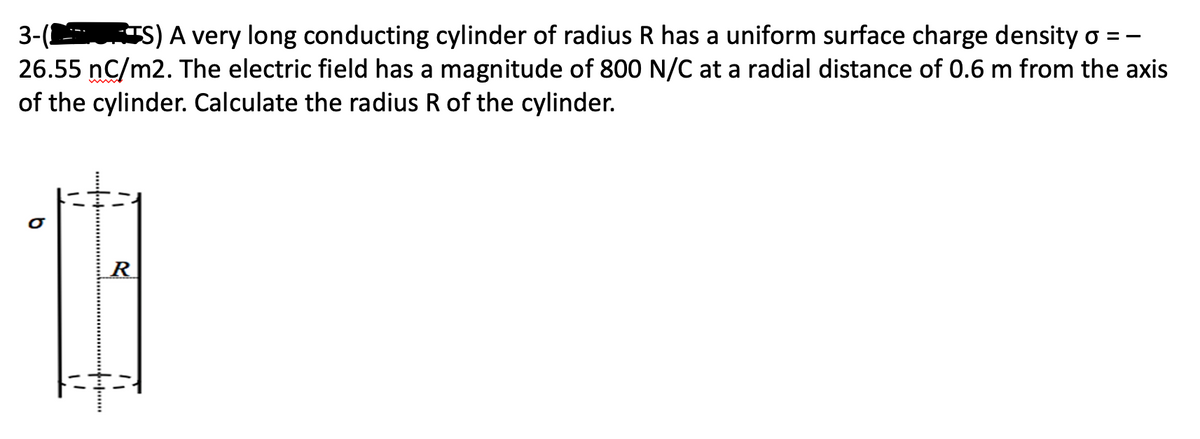A flat sheet of paper of area 0.250m^2 is oriented so that the normal to the sheet is at an angle of 60 degree to a uniform electric flux through the sheet. (b) Does the answer to part (a) depend on the shape of the sheet? Why or why not? (c) For what angle between the normal to the sheet the electrical field is the magnitude of the flux through the sheet (1) largest and (2) smallest? Explain
A flat sheet of paper of area 0.250m^2 is oriented so that the normal to the sheet is at an angle of 60 degree to a uniform electric flux through the sheet. (b) Does the answer to part (a) depend on the shape of the sheet? Why or why not? (c) For what angle between the normal to the sheet the electrical field is the magnitude of the flux through the sheet (1) largest and (2) smallest? Explain
College Physics
10th Edition
ISBN:9781285737027
Author:Raymond A. Serway, Chris Vuille
Publisher:Raymond A. Serway, Chris Vuille
Chapter15: Electric Forces And Electric Fields
Section: Chapter Questions
Problem 56AP: A nonconducting, thin plane sheet of charge carries a uniform charge per unit area of 5.20 C/m2 as...
Related questions
Question

Transcribed Image Text:A flat sheet of paper of area 0.250m^2 is oriented so that the normal to the sheet is at an angle of 60
degree to a uniform electric flux through the sheet. (b) Does the answer to part (a) depend on the
shape of the sheet? Why or why not? (c) For what angle between the normal to the sheet the
electrical field is the magnitude of the flux through the sheet (1) largest and (2) smallest? Explain

Transcribed Image Text:3-(1 S) A very long conducting cylinder of radius R has a uniform surface charge density o = -
26.55 nC/m2. The electric field has a magnitude of 800 N/C at a radial distance of 0.6 m from the axis
of the cylinder. Calculate the radius R of the cylinder.
b
R
FR
Expert Solution
This question has been solved!
Explore an expertly crafted, step-by-step solution for a thorough understanding of key concepts.
Step by step
Solved in 2 steps with 1 images

Knowledge Booster
Learn more about
Need a deep-dive on the concept behind this application? Look no further. Learn more about this topic, physics and related others by exploring similar questions and additional content below.Recommended textbooks for you

College Physics
Physics
ISBN:
9781285737027
Author:
Raymond A. Serway, Chris Vuille
Publisher:
Cengage Learning

College Physics
Physics
ISBN:
9781305952300
Author:
Raymond A. Serway, Chris Vuille
Publisher:
Cengage Learning

Physics for Scientists and Engineers, Technology …
Physics
ISBN:
9781305116399
Author:
Raymond A. Serway, John W. Jewett
Publisher:
Cengage Learning

College Physics
Physics
ISBN:
9781285737027
Author:
Raymond A. Serway, Chris Vuille
Publisher:
Cengage Learning

College Physics
Physics
ISBN:
9781305952300
Author:
Raymond A. Serway, Chris Vuille
Publisher:
Cengage Learning

Physics for Scientists and Engineers, Technology …
Physics
ISBN:
9781305116399
Author:
Raymond A. Serway, John W. Jewett
Publisher:
Cengage Learning

Physics for Scientists and Engineers with Modern …
Physics
ISBN:
9781337553292
Author:
Raymond A. Serway, John W. Jewett
Publisher:
Cengage Learning

Principles of Physics: A Calculus-Based Text
Physics
ISBN:
9781133104261
Author:
Raymond A. Serway, John W. Jewett
Publisher:
Cengage Learning

Physics for Scientists and Engineers: Foundations…
Physics
ISBN:
9781133939146
Author:
Katz, Debora M.
Publisher:
Cengage Learning